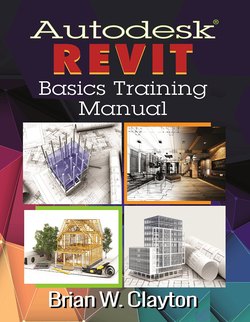Читать книгу Autodesk® Revit Basics Training Manual - Brian W. Clayton - Страница 7
На сайте Литреса книга снята с продажи.
ОглавлениеForeword
Brian Clayton’s Autodesk® Revit Basics Training Manual is a contemporary and relevant text for all those looking to learn or advance their design capabilities into the future of building information modeling (BIM). Today, the building design and construction industry has been and continues to be influenced by modern technological gains. Like several other industries, building design and construction requires a deep commitment to understanding BIM and its application. Professional educators and consultants facilitating design and construction curricula need to adopt a learning culture and create professional development opportunities in order to provide the industry with a contemporary skill set. The practice of designing a structure by hand is nearly obsolete, and while computer aided drafting software has been used for several years, BIM is a relatively new concept for the design and construction industry.
Currently there is very little literature available that can be used as an instructional manual for the application of the Revit software. Autodesk Revit Basics Training Manual presents an important contribution to the building design and construction industry and provides colleges and universities with a step-by-step instructional manual for the application of Revit. While this manual can be beneficial to numerous design and construction disciplines and trades, the text is focused on the architectural and interior design application. However, the author does briefly introduce the reader to other concepts such as plumbing for bathroom fixtures, and electrical for lighting and ceiling fans. The author also discusses Revit’s mechanical application used for HVAC design.
Brian Clayton has developed an easy-to-read, systematic Revit user’s manual. This work provides students and professionals alike with the skills required to be competitive in today’s design and construction market, and also offers educators a supplement to their career and technical program pedagogy as a result of collaborations between educators and employers1. Likewise, students will be able to use this manual as a career-long reference once they are employed in the design and construction industry. In addition, if students or design professionals have prior Revit experience, this manual can offer useful tips and supplement their prior knowledge, improving their design productivity by offering a more efficient way to apply Revit in their discipline.
Revit can be used by large architectural firms with various teams within a firm working on a model and it can be used by small, one-person design firms to help facilitate the design and construction process. Revit projects can range in size from large, complex designs to small, relatively simple designs. Since Revit is BIM software, it is able to jump back and forth between different disciplines. Therefore, it is considered a multifunctional software that supports collaboration efforts among the various trades and disciplines involved in large or small design projects. In today’s LEED2-based design economy, Revit software offers the support required to accurately respond to LEED design inquiries. Because of the prevalence of LEED, many design firms are required to use BIM software to complete their contract drawings. While the LEED application of the Revit software is outside the scope of this manual, the author provides learners with a solid foundation in Revit upon which they can build.
Brian Clayton has written this manual to provide those professionals interested in learning Revit with the objective of increasing design production and to offer career and technical pedagogy with an informed, easy-to-read, step-by-step user’s manual. While this manual offers a streamlined facilitation of the software, Revit instruction in general is an advanced pedagogy. Therefore, this manual is intended to target those professionals and students who are already familiar with Autodesk AutoCAD software. Indeed, because Revit is a more complex design software, the ability for a first-time Revit user to complete a small design project using this manual as a reference isfavorable.
This Revit manual helps to bridge the gap between the lack of Revit instruction literature and the demand for the software to be used in the industry. Brian Clayton’s Autodesk Revit Basics Training Manual is a valuable tool for students and professionals.
Thomas R. Gauthier, EdD. Associate Professor Guilford Technical Community College
1 Hora, M.T., Benbow, R.J., & Oleson, A.K. (2016). Beyond the skills gap Cambridge, MA: Harvard Education Press
2 LEED stands for Leadership in Energy and Environmental Design, a rating by the USGBC—the United States Green Building Council— to evaluate the environmental performance of a building, and encourage market transformation towards sustainable design.
